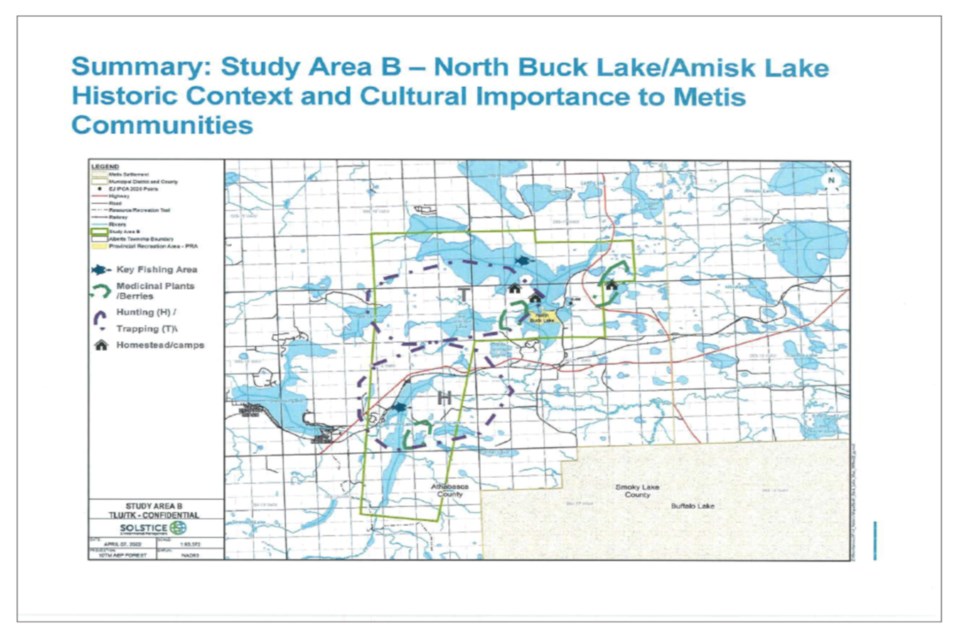ATHABASCA — Athabasca County is opposing a feasibility study on Indigenous Protected and Conservation Areas (IPCA) currently underway for the Métis Settlements General Council (MSGC).
The study is being conducted northwest of the settlement and affects lands inside Athabasca County borders, specifically for North Buck Lake, Big Johnson Lake, and Amisk Lake and until it’s clear how any changes will impact the county regarding assessment, planning, and other concerns relating to county autonomy, councillors decided at their Nov. 15 regular meeting to oppose the study and hold a town hall meeting to discuss the issue with residents.
IPCAs are “areas of land and water where Indigenous peoples and governments have long-term commitment to protection, conservation and management of land and habitat” according to a draft report from Toma Consulting and Solstice Environmental Management included in the agenda package.
It is an Indigenous-led initiaitive to help determine objectives, boundaries and management/governance using Indigenous knowledge, culture and language as the cornerstones. There are 40 existing or emerging IPCAs across Canada and Alberta has four of them encompassing several wilderness areas for “cooperative management and caribou management”, the draft said.
The area in question covers 121 square kilometres and over 45 sections of land and is of historic and cultural importance to Métis communities as key fishing and hunting areas, as well accessing medicinal plants and berries.
According to the draft study, the key principals include monitoring and management programs for habitat, species, water, and land use and to co-manage in a collaborative approach. Other considerations include the caribou and other at-risk species in the area; water and wetlands restoration; continued lake recreation; and cottage users; new rural land-based economic opportunities; retaining and enhancing Indigenous cultural and historic settlements and new tourism opportunities.
With no discussion before or after the motion, it was Coun. Kelly Chamzuk who moved to oppose the development of the IPCA.
“I just feel it's important to acknowledge the concerns of every constituent and I’d like to move the motion as written with the addition to carbon copy MLAs Mr. (Glenn) van Dijken and Mr. Brian Jean, please,” she said.
The motion as presented read, “Council opposes the development of the new Indigenous Protected and Conservation Area (IPCA) until such time as clarity is provided regarding assessment control, land use planning, and Athabasca County’s autonomy on lands inside the municipality’s jurisdictional boundaries, and continued future resident use of the lands in question and furthermore that council directs administration to prepare a draft letter to the Alberta Premier, the Minister of Environment and Parks, the Minister of Municipal Affairs, and the Minister of Indigenous Relations from the reeve outlining the municipality’s concerns regarding the matter.
After it was unanimously passed, Coun. Ashtin Anderson made a motion to hold a town hall meeting, which also passed unanimously.
“I’d like to make a motion to schedule a town hall event at the Grassland Community Hall on Dec. 1 or 6 at 7 p.m., to address resident concerns related to the IPCA and further, to invite MLAs Glenn Van Dijken and David Hanson, as well as mayor Paul Reutov, reeve Barry Kalinski and fellow council members from the MD of Bonnyville,” said Anderson.



